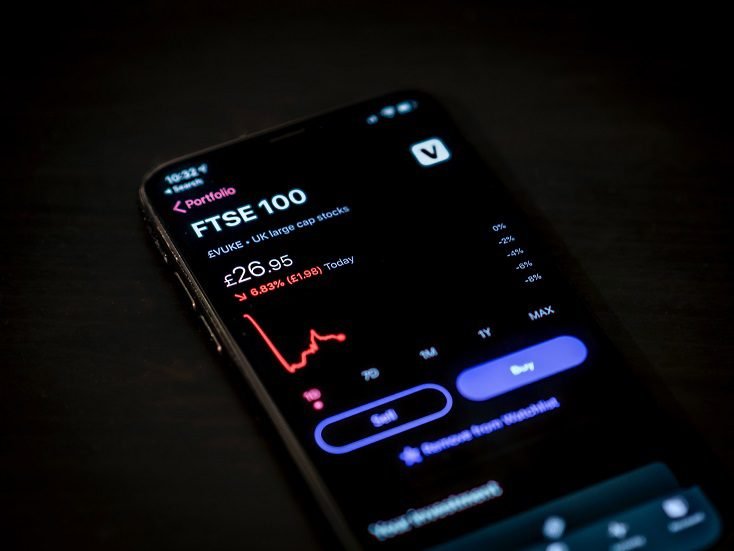Figuring out the best position size for your trades can make a huge difference in your success. It’s not just about picking the right stocks but also about managing risk smartly. In this guide, we’ll break down simple strategies and insights to help you find the optimal position size, enhancing your trading performance and minimizing potential losses.
In addition, if you are looking for a free and easy-to-use website that helps people find an education company to start learning about investments, you may visit this main website.
Analyzing Market Conditions for Position Sizing
Volatility and Its Influence on Position Size
Volatility can make or break a trade. When markets are volatile, prices can swing wildly. This uncertainty affects how much money you should put on a trade. For example, in a calm market, you might risk a larger portion of your funds.
But when volatility spikes, a smaller position is wiser to avoid huge losses. The trick is to gauge market stability. One way is to use the VIX index, also known as the “fear gauge,” which measures market volatility. If the VIX is high, tread carefully and consider reducing your position size.
Adapting to Market Trends and Patterns
Trends and patterns tell a story. Are we in a bull market, where prices steadily rise? Or are we in a bear market, with falling prices? Recognizing these patterns helps in adjusting your position size. For instance, in a strong uptrend, you might increase your position, riding the wave of optimism.
In contrast, during a downtrend, you might cut back, preserving your capital. Technical analysis tools, like moving averages and trend lines, can help spot these trends. Being flexible and adjusting your positions according to these patterns can improve your chances of success.
Mathematical Models and Formulas for Position Sizing
The Kelly Criterion: Maximizing Growth
The Kelly Criterion is like a betting formula for traders. It tells you how much to risk based on your edge and win/loss ratio. Here’s a simple version: if your strategy gives you a 60% chance to win and you win $2 for every $1 you lose, Kelly says you should bet 20% of your capital. This method aims to maximize your growth over time. However, it can be aggressive. Many traders use a fraction of the Kelly number to avoid big swings in their account balance.

Fixed Fractional Method: Balancing Risk and Reward
This method is straightforward and popular. It involves risking a fixed percentage of your trading capital on each trade, usually between 1% and 3%. For instance, if you have $10,000 and choose 2%, you risk $200 per trade.
This approach helps manage risk by ensuring no single trade can significantly damage your account. It also adjusts automatically as your account grows or shrinks, keeping your risk level consistent. This balance between risk and reward makes it a favored choice among many traders.
Using the Average True Range (ATR) for Dynamic Position Sizing
ATR measures market volatility by averaging the range between high and low prices over a set period, usually 14 days. To use ATR for position sizing, you first calculate the dollar value of the ATR.
Then, divide your desired risk amount by this value. For example, if you want to risk $100 per trade and the ATR is $2, you could trade 50 shares. This method adjusts position size based on current market conditions, ensuring you take smaller positions in volatile markets and larger ones when things are calmer.

Psychological Aspects of Position Sizing
Managing Emotions and Maintaining Discipline
Trading can be an emotional rollercoaster. Fear and greed are your worst enemies. Fear makes you sell too soon, and greed makes you hold on too long. The key is to stay disciplined. Set clear rules for entering and exiting trades and stick to them.
It helps to use stop-loss orders to limit your losses. Also, don’t risk more than you can afford to lose on any trade. This way, even if things go south, you won’t be wiped out. Remember, the market will always give you another opportunity.
The Psychology of Risk and Reward Ratios
Understanding risk and reward is crucial. Let’s say you risk $1 to make $2. This 1:2 risk/reward ratio means you only need to be right 33% of the time to break even. Many traders aim for higher ratios like 1:3 or even 1:4, which means they need fewer winning trades to be profitable.
It’s essential to find a ratio that fits your trading style and stick to it. Knowing your risk/reward ratio helps keep your emotions in check because you have a clear plan and realistic expectations for each trade.
Conclusion
Mastering position sizing is key to consistent trading success. By understanding market conditions, applying proven formulas, and managing your emotions, you can make informed decisions that balance risk and reward. Remember, successful trading isn’t just about big wins but maintaining discipline and protecting your capital over the long haul.



